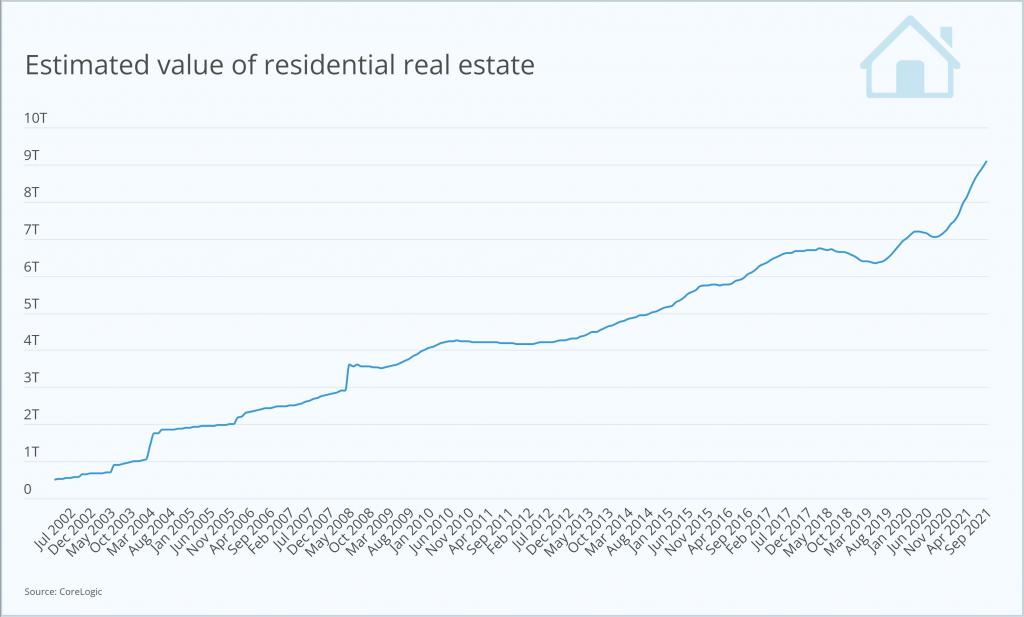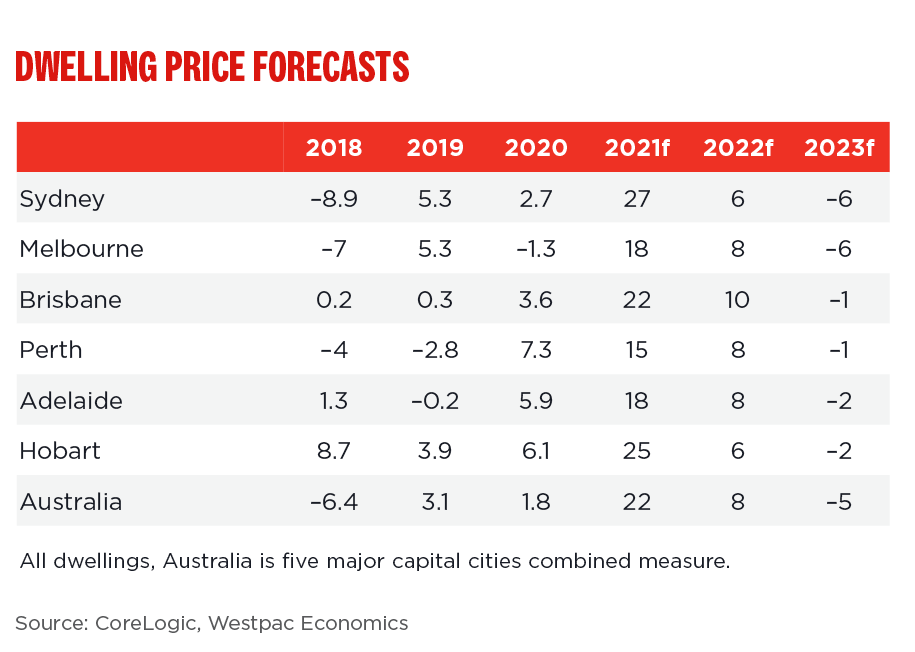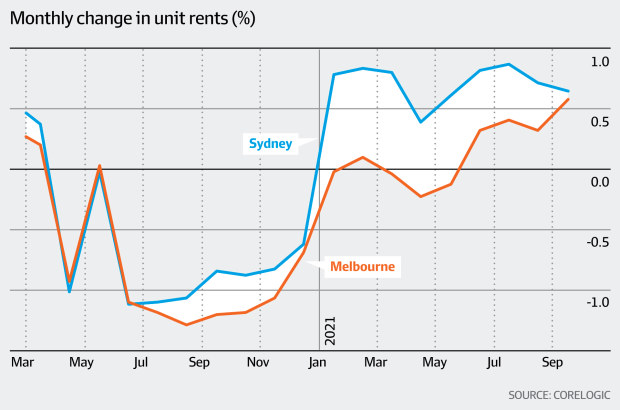5 residential property market trends to look out for in 2022
After a stellar performance for much of 2021, Australia’s residential property market is now settling into a period of slower growth. Nonetheless, it continues to provide compelling opportunities for both developers and investors who know where to look.
In this article, we explore five key trends in the Australian residential property sector, the numbers behind them, and the views of some of Australia’s leading industry commentators.
Over the five months from April to September this year, house prices rose so rapidly that the total value of Australia’s residential real estate increased by a trillion dollars to reach $9.1 trillion, generating an incredible annualised growth rate of almost 30%.

However, recent reports such as NAB’s latest Residential Property Survey have shown national housing market sentiment easing and building approvals are forecast to slow down over the final quarter of 2021. NAB is predicting growth in house prices of 5% in 2022 after 2021’s estimated 23% for the year (the highest since 1989).
Westpac recently forecasted house prices to increase by 8% in 2022, with most of that loaded into the first half of the year, before the market enters a mild correction phase in 2023, with prices to retrace by 5% on the back of high construction costs and stretched affordability.

Looking ahead, we provide some key trends likely to shape the residential property market into 2022:
1. Rates and regulators continue to impact the market
The Reserve Bank of Australia (RBA) last raised its cash rate in 2010 and has said it does not expect to do so again before late 2023 at the earliest. A growing number of observers disagree, predicting the RBA will be forced to raise interest rates next year. However, coming off the current historic low level of 0.1% p.a., the effect of rate rises on housing affordability is expected to be muted for some time to come.
The Australian Prudential Regulation Authority (APRA) in October hiked the servicing rate for lenders, reducing the debt capacity of borrowers by around 5%. This is unlikely to have a large impact on housing demand, although NAB warns regulators may soon introduce additional cooling measures such as higher debt-to-income or loan-to-value ratio limits.
2. Demand for units to bounce back
The pandemic has been notable for driving a strong shift in consumer sentiment towards lower-density living, and also for causing a flight from capital cities to regional areas. However, several indicators suggest that these two trends are now peaking and will soon begin reversing.
The premium of house prices over unit prices has reached record highs, and some inner-city high-rise rents have fallen by up to 30% over the past two years. But the annual trend for national unit rents has turned positive, while vacancy rates across the capitals have stopped rising and are expected to trend downwards in the months ahead.

Easing border restrictions and the eventual return of overseas students, immigrants and hospitality workers, as well as businesses and nightlife, are expected to rapidly boost demand for city accommodation as has already happened in London, New York and other cities.
Domain’s chief of research and economics Nicola Powell says the capital city CBD markets that have seen the worst impacts of the pandemic will recover the fastest.
“We know that the majority of people arriving from overseas choose Sydney or Melbourne as their destination.
“I do think we will see additional pressure on rental markets in Melbourne and Sydney once overseas migration goes back to normal,” says Dr Powell.
At the same time, buyers are seeing greater value in units due to house price affordability constraints, and growing investor activity is supporting unit prices.
Investor mortgage demand has increased from a record low of around 23% to more than 30%, and CoreLogic head of research Tim Lawless says this is helping to drive recovery in these markets.
“Both the lower entry point and higher yield profile may be an attractive option for investors as they become more active in the housing market,” Lawless says.
CoreLogic tips Melbourne to experience Australia’s highest rental demand growth as international borders open. QBE highlights Geelong as a medium-term growth point, due to its affordability advantage over the state capital.
3. Exodus to the regions reversing
Another trend expected to develop over the coming months is a flow of property buyers from regional areas back to the capital cities.
Living regionally and working remotely will prove less tenable than some recent migrants had expected. Longer-term city dwellers will seek to return to a larger choice of amenities, family and friends, predicts SQM Research director Louis Christopher. This will add to the demand for stock in urban areas.
“I’m expecting to see a swing back towards the cities over time and there will be a move away from the regions.
“I think the outflow will probably come more from inland Australia rather than the coast, as the coast tends to have more amenities and offer better lifestyle options,” says Christopher.
4. South East Queensland due to be popular for years to come
Brisbane, the Sunshine Coast and Gold Coast should continue to experience sustained interstate migration through to 2024, says QBE, as South East Queensland will remain relatively affordable when compared to Sydney and Melbourne.
Since September last year, 11% of all capital city residents migrating to regional areas have moved to the Gold Coast, making it the most popular destination in Australia according to the Regional Australia Institute.
5. ‘Work-from-home’ changing residential needs
Within cities, the continued popularity of working from home will benefit metro areas and regional suburbia. Managing Director of The Demographics Group, Bernard Salt, expects ‘upgraders’ in the 37-45 age group to be the most rapidly growing segment of the residential property market over the next five years.
“I think we will see heightened demand for upgrader McMansion product on the city’s edge (the Zoom call has killed commuting) and/or in idyllic lifestyle locales within striking distance of capital-city workplaces. family-friendly housing: three-four bedrooms, two bathrooms, front garden, backyard,’’ says Salt.
Investing with Trilogy
We operate managed investment trusts, focused on property, and other financial assets on behalf of over 10,000 investors. We do this by leveraging our combined talents to actively manage your investment. Discover Trilogy Funds here.

2 topics
1 fund mentioned

